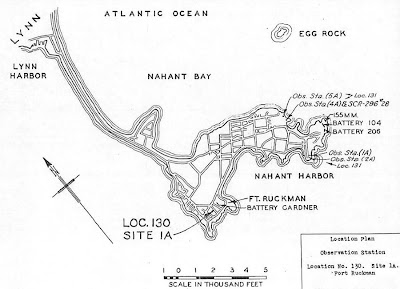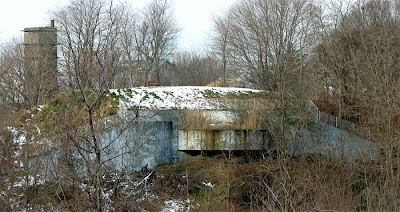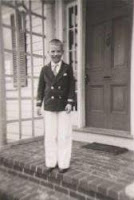Nahant, MA: Wartime
Dinon's father, my great-grandfather Ralph, worked on the mainland end of the Nahant causeway in the town of Lynn, MA. He was a chemical engineer, working in the plastics division for General Electric. In 1936, he had a 5-year-old son, Dinon, and a pregnant wife, Babe. It was just 6 years after the start of the Great Depression, and he was fortunate just to have a job.
In September of 1939, Germany invaded Poland. By then, his sons, Dinon and Daryll, were just 8 and 3 years old. And, in spite of everything, he had been talking with Babe about even having a third child in another couple of years.
Something that is remarkably consistent in the way my grandfather, Dinon, tells his childhood stories is his tone of contentment and happiness. In spite of being born in the outgoing tide of the Great Depression and being a young boy as the second world war brewed and broke, Dinon's childhood memories are happy. I think it says a lot about my great-grandparents, Ralph and Babe, that Dinon's memories of the effects of the war on Nahant are all colored in the safety of adventure.
 |
|
The golf course is the biggest white space, positioned to the west and north of Ft. Ruckman (source) |
 |
|
Today: Battery Gardner Gun 1 and the Ft. Ruckman fire tower (source) |
"It was probably in the summertime of 1940, something like that, and since I was a kid, I became a mascot at one of the barracks. There was a Sergeant Gymo (pronounced "JI-mo"), and a lot of the soldiers were from Midwest communities, and they'd never seen a beach before and they got burned," Dinon said, laughing. "They’d lay down on the beach and think it was great, but sunscreen was pretty well unknown. So they would burn, and they would come to me, and their backs were itching, so they asked me to peel their skin off – and I'd just take my hand and peeeeel it back – so it wouldn't itch so bad."
I have to wonder what my great-grandparents were thinking as they watched troops, equipment, and antiaircraft weaponry arrive on their tiny coastal home. This was still pre-Pearl Harbor, but the radio was filled with news about an aggressive Germany and bombings in Europe and President Roosevelt's "fireside chats". What went through their minds about their two young boys when ration stamps were issued, black-out curtains and curfews were enforced, and the men and women of their community were called to help with the war effort?
But in spite of the potential threats and uncomfortable restrictions, life - work, school, laundry and meals - had to go on.
 |
|
Dinon, on the porch of the Nahant house |
“It was a very interesting time.”
Not terrifying, uncomfortable, or uneasy.
Interesting.
“Liz and I went to Nahant when we drove out East, and we decided we’d go visit where I lived," he said. "And so, we drove up to the house, and we parked across the street from it and I started to take pictures of the house. Well, that really upset the owner – the woman’s husband wasn't there – and so this woman called her son, and her son said, 'Go out and find out why they’re taking them.' And so, when I told her that I used to live there when I was a kid, she invited us in and they had not changed that house really at all, it was still the same as I remembered it as a kid. She allowed us to go upstairs into the bedrooms, and ... I could still see the ocean in two directions.”








